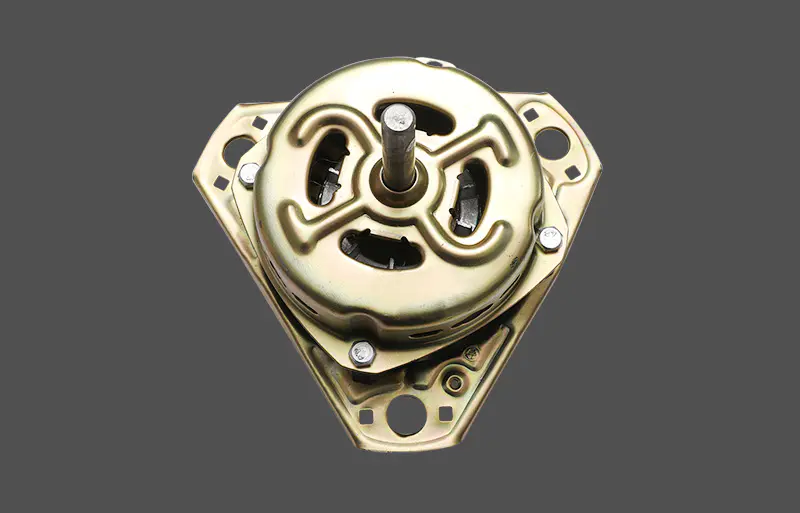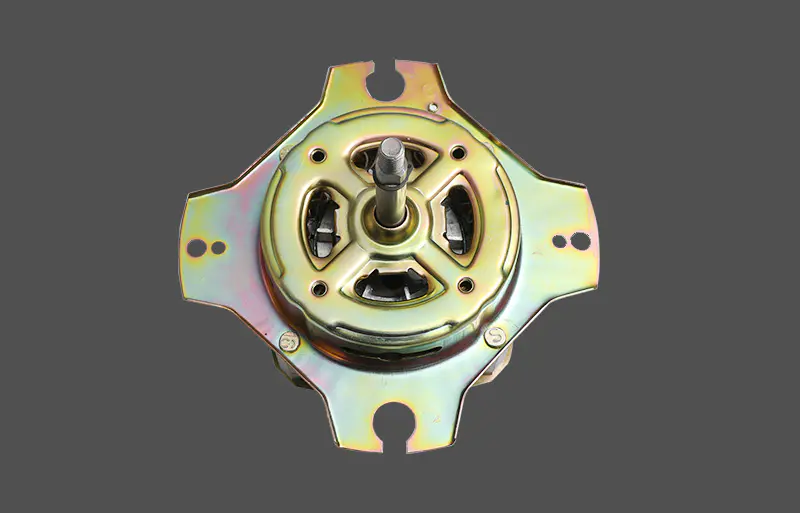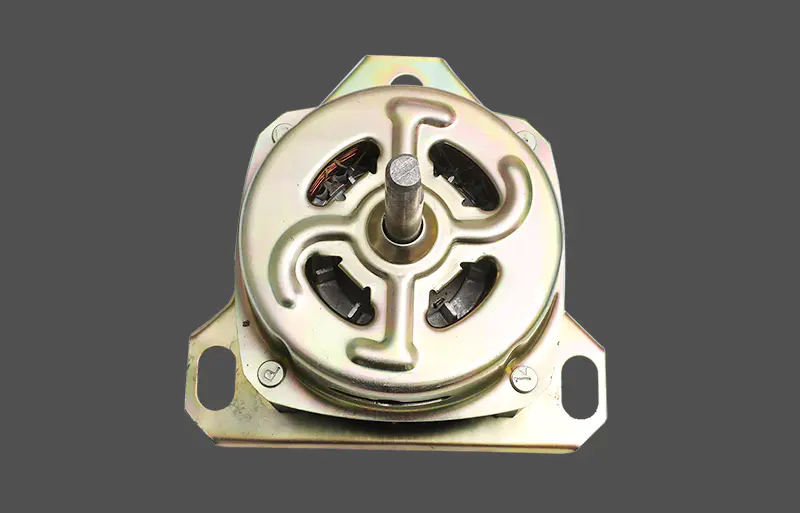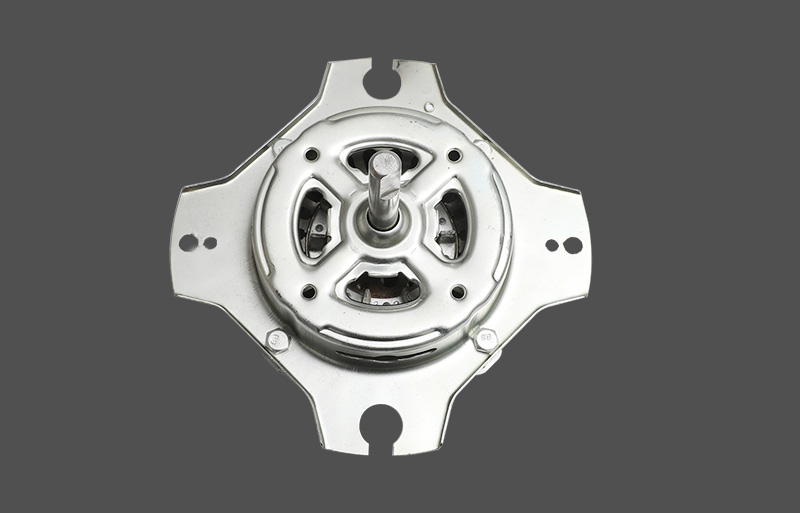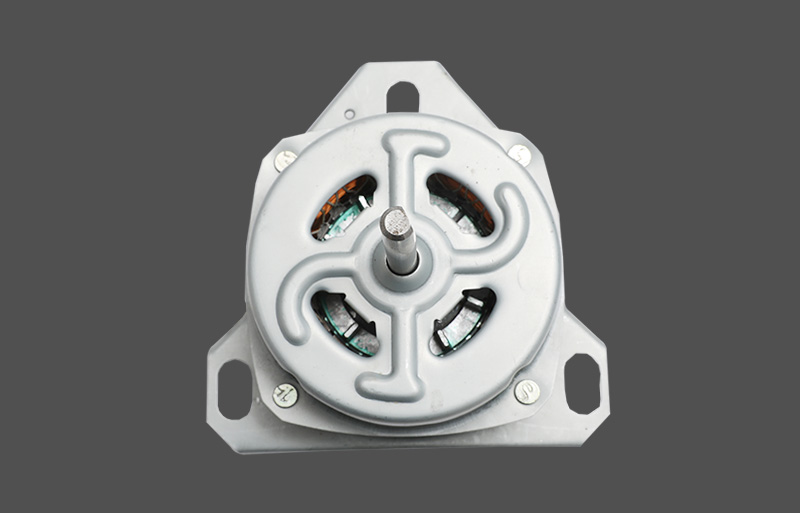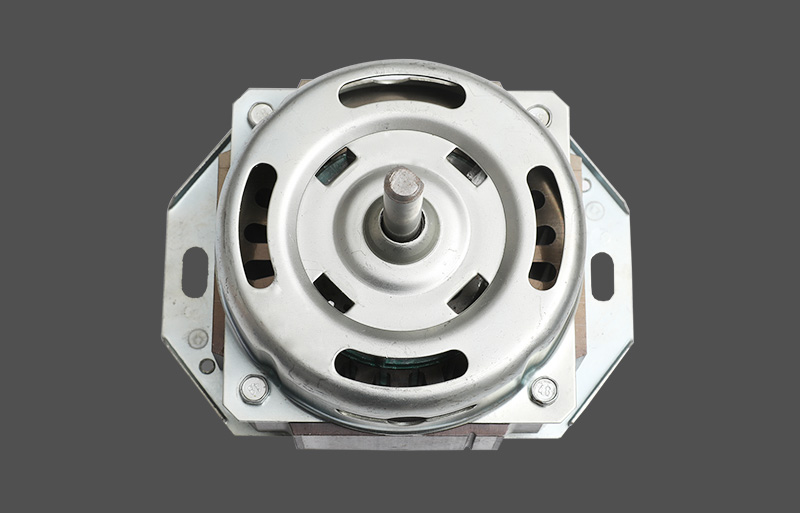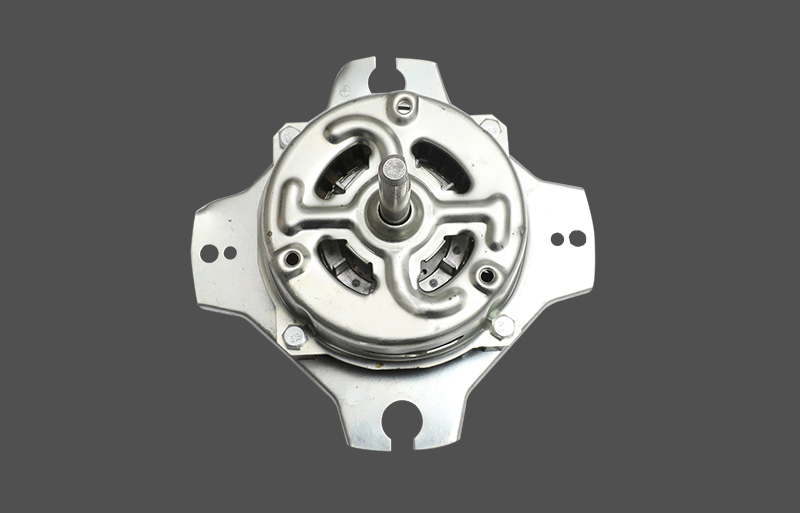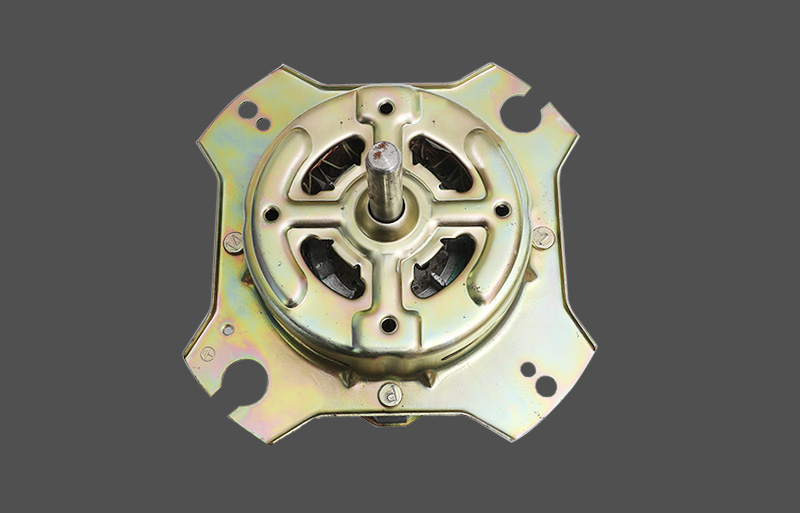The spin motor in a washing machine is a core component for high-speed clothes drying. Its performance directly affects spin efficiency, noise levels, and energy consumption. Different types of motors differ significantly in structure, control method, cost, and lifespan.
Induction Motor (Asynchronous Motor)
The induction motor, also known as an asynchronous motor, is the most commonly used motor in traditional washing machines. Its operating principle is based on electromagnetic induction: alternating current generates a rotating magnetic field in the stator winding, driving the rotor. Induction motors offer a simple structure, high reliability, and long-term stable operation.
Advantages include low manufacturing cost, long service life, easy maintenance, and strong adaptability to power grids. Disadvantages include high starting current, limited starting torque, and the inability to directly achieve variable-speed spin drying, requiring mechanical transmission or electronic variable-frequency control. Induction motors are commonly used in mid-range and low-end washing machines, particularly for loads with minimal fluctuations in clothing.
Permanent Magnet Synchronous Motor (PMSM)
PMSMs generate a rotating magnetic field in their stator windings, while their rotors, equipped with high-performance permanent magnets, rotate synchronously. Compared to induction motors, PMSMs offer high efficiency, high power density, and enhanced controllability. The spin process allows for precise speed regulation and soft start, reducing mechanical shock and noise while also lowering energy consumption.
Permanent magnet synchronous motors are suitable for mid- to high-end washing machines. While they are relatively expensive, require an electronic controller (inverter) for their drive, and their motor structure places high demands on heat dissipation, they offer significant overall performance advantages. For washing machines that require frequent spin cycles and high speeds, permanent magnet synchronous motors are the preferred choice.
Brushless DC Motor (BLDC)
A brushless DC motor is a type of motor that uses electronic commutation to achieve rotation. The rotor uses permanent magnets, and the stator windings are driven by an electronic controller, eliminating the brushes and commutator of traditional DC motors. BLDC motors offer the advantages of high efficiency, low noise, long life, and fast response.
Spin motors using BLDC technology enable precise speed control and dynamic load adjustment, ensuring uniform drying of clothes while reducing vibration and noise. The drawback is the complex control circuitry and higher cost compared to induction motors, but they are ideal for users seeking high performance and low energy consumption. BLDC motors are widely used in smart washing machines and front-loading washing machines.
Servo Motors
Servo motors, combined with sensors and closed-loop control systems, achieve precise control of speed, torque, and position. Washing machine spin motors employ servo control, enabling real-time monitoring of drum load and clothing distribution, enabling imbalance detection and intelligent speed regulation. Servo motors offer fast response, low vibration, and high precision, significantly improving spin efficiency and user experience.
Servo motors are relatively expensive and are typically used in high-end smart washing machines and industrial laundry equipment. Their complex control systems require reliable sensors and algorithms, but they offer significant advantages in energy saving, quiet operation, and clothing protection.
Eddy-current Motors
Eddy-current motors generate eddy currents in the rotor through magnetic field induction, generating torque output. Eddy-current motors are characterized by zero contact wear, low noise, and suitability for long-term high-speed operation. Dehydration motors employ an eddy-current design to reduce vibration and friction loss at high speeds, extending their service life.
Eddy-current motors have a complex structure and high cost, and their control generally relies on inverters. They are primarily used in high-end front-loading washing machines and special-purpose washing machines, such as high-speed spin machines or large-capacity washing machines.




